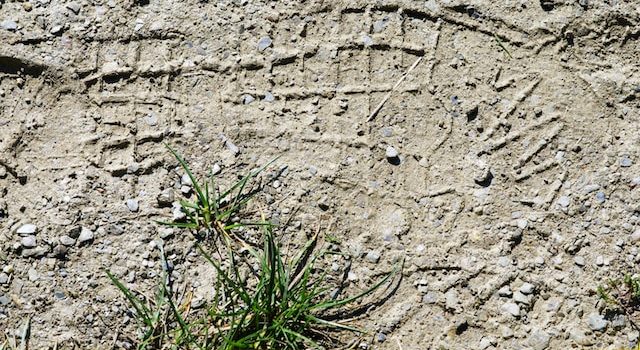
Over the past few decades, DNA analysis has revolutionized the field of criminal justice. From identifying suspects to exonerating innocent individuals, DNA has played a crucial role in solving some of the most complex and heinous crimes. But what exactly is DNA? How does it work in forensic investigations? In this blog post, we’ll delve into the history and future of DNA analysis in criminal justice and explore just how important this technology has become in modern law enforcement. So buckle up and let’s get started!
What is DNA?
DNA, or deoxyribonucleic acid, is a molecule that carries genetic information. It’s found in almost every cell of an organism and contains the instructions necessary for the development and function of living things.
DNA is made up of four nitrogenous bases: adenine (A), guanine (G), cytosine (C), and thymine (T). These bases pair up with each other in specific ways – A always pairs with T, while G always pairs with C – to form what’s known as a double helix structure.
The sequence of these base pairs determines an organism’s unique traits, such as eye color, height, and susceptibility to certain diseases. In forensic investigations, DNA analysis involves comparing the DNA profiles from crime scene evidence to those of potential suspects in order to identify or exclude them from involvement in the crime.
While there are ethical concerns surrounding DNA collection and use in criminal justice systems around the world, it remains a powerful tool for solving crimes and bringing justice to victims.
How is DNA Used in Criminal Justice?
DNA analysis has become an essential tool in solving crimes and bringing criminals to justice. By analyzing the unique genetic material found in every cell of our bodies, forensic scientists can link suspects to crime scenes or exclude innocent individuals from suspicion.
One common use of DNA in criminal investigations is through the comparison of DNA samples collected at a crime scene with those taken from potential suspects. If a suspect’s DNA matches that found at the crime scene, it provides strong evidence linking them to the crime.
DNA can also be used to identify victims of crimes such as homicide or sexual assault when their identity is unknown. By comparing DNA profiles obtained from unidentified remains with those stored in databases, investigators may be able to identify the victim and bring closure for their loved ones.
Additionally, familial searching using DNA can help investigators identify potential relatives of an unknown perpetrator whose profile matches that found at a crime scene. This technique has been successful in identifying suspects who may have previously gone undetected by traditional investigation methods.
DNA analysis plays a crucial role in modern criminal justice by providing reliable and scientific evidence that helps solve crimes and bring perpetrators to justice.
The History of DNA Analysis in Criminal Justice
The history of DNA analysis in criminal justice dates back to the 1980s when scientists discovered that each person’s DNA is unique. This breakthrough led to its use as a tool for identifying suspects and solving crimes.
One of the first cases in which DNA was used successfully as evidence was the rape and murder case of Mary Ann Leneghan in the UK in 2005. The police were able to identify four men who had raped and murdered her through their DNA found at the crime scene.
Since then, DNA has become an increasingly important tool for law enforcement agencies worldwide. It has been used to exonerate innocent individuals who have been wrongly convicted, solve cold cases, and identify unknown victims.
The development of new technologies such as forensic genealogy, which uses genetic data from public databases to identify suspects, has also expanded the application of DNA analysis in criminal investigations.
However, there are still ethical concerns surrounding privacy violations and potential misuse of genetic information. As technology continues to advance rapidly, it remains crucial for policymakers and stakeholders to address these issues proactively while harnessing the full potential of this groundbreaking technology.
The Future of DNA Analysis in Criminal Justice
The future of DNA analysis in criminal justice is extremely promising. With new advancements in technology and research, DNA analysis can now provide information about a suspect’s physical traits, such as eye color or hair texture. This could potentially help investigators narrow down their search for suspects even further.
Additionally, the accuracy of DNA analysis continues to improve. This means that there will be fewer wrongful convictions and more accurate identifications of suspects. It also means that cold cases may be solved using updated techniques and databases.
Another area where DNA analysis is advancing is in identifying familial relationships between suspects. This allows investigators to identify potential accomplices or family members who may have knowledge of the crime.
The future of DNA analysis in criminal justice holds great promise for improving investigations and ensuring justice is served accurately and efficiently. As technology continues to advance, so too will our ability to use DNA evidence effectively in solving crimes.
Conclusion
DNA analysis has become an essential tool in modern criminal justice systems. It has revolutionized the way that crimes are investigated and solved, helping to exonerate innocent individuals while also bringing criminals to justice. The history of DNA analysis is a testament to its importance in criminal investigations, with countless cases being solved thanks to this science.
Furthermore, the future of DNA analysis looks bright as new technology and techniques continue to emerge. With more sophisticated methods for analyzing DNA samples becoming available all the time, it seems likely that this field will only continue to grow and evolve over time.
It is clear that DNA analysis plays a crucial role in modern criminal justice. From identifying suspects and solving cold cases to exonerating innocent people who have been wrongly accused, this powerful tool has changed the face of law enforcement forever. As we move forward into the future, there is no doubt that we will continue to rely on DNA analysis as one of our most important weapons in the fight against crime.










